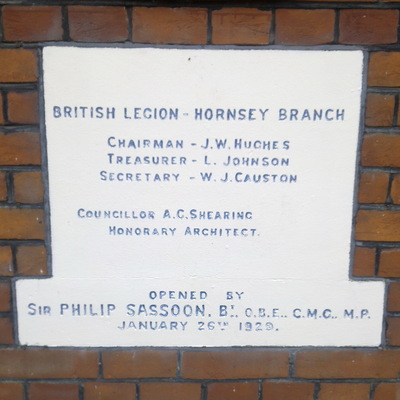1st Lord Haig. Born Edinburgh into the whisky family. Senior commander during WW1. Initially nicknamed "butcher of the Somme", but then popular before his death. He has since been criticised for mismanagement of some of the major battles in France. First president of the British Legion. Died 21 Prince's Gate. This photo shows his statue in Edinburgh Castle.
This section lists the memorials where the subject on this page is commemorated:
Lord Douglas Haig
Commemorated ati
Cavalry Memorial
Unveiled in its original location, at Stanhope Gate by the Dorchester Hotel, ...
Hornsey British Legion
This double plaque is under the window on the left. Sir Philip Sassoon was AD...
Other Subjects
Private William Jones
There is some confusion about this man. According to the Commonwealth War Graves Commission website, William Jones was born in 1875 a son of Hugh and Bridget Jones who lived in Listowel, County Ker...
C. F. Nicholls
Co-partner or employee of the South Suburban Gas Company. Served but did not die in WW1.
Previously viewed
Queen Elizabeth the Queen Mother
In 1923 Lady Elizabeth Bowes-Lyon (descended from the Royal House of Scotland) married Prince Albert, Duke of York, the man who would become George VI when his elder brother Edward VIII abdicated. ...
City Temple Church
The current church was built in 1874, destroyed by enemy action on 16 April 1941, and rebuilt by 1955.







Comments are provided by Facebook, please ensure you are signed in here to see them